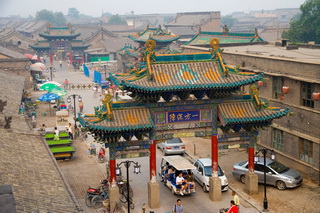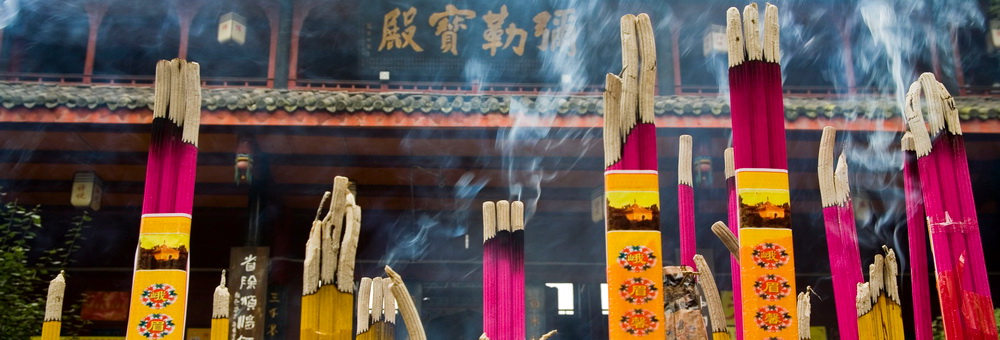
 China Tours
China Tours Tibet Tours
Tibet Tours China Theme Tours
China Theme Tours Off The Beaten Track
Off The Beaten Track Yangtze Cruises
Yangtze Cruises China Trip Planner
China Trip Planner Travel Agents
Travel Agents


We had a wonderful time in Tibet. We have learned a lot about this unique destination because of the wonderful guide Degyi who is so knowledge and always available towards our tours. We stayed at the Shangri-La Hotel Lhasa, and we would never imagine a Tibet travel could be so nice and amazing without the help of Degyi.
Also, thanks a lot to our Tibetan driver Mr.Wongdun for his safe driving and a good sense of service along the way.
We shall return Tibet in the near future!
P.B. and A. A - Europe
Tibet Travel
June 2018 (Private Tibet Journey from Kathmandu)

 Whereas other cities have embraced modernity often at the expense of their historical heritage, Pingyao tenaciously holds onto its past. As dawn breaks and the morning sun bathes Pingyao's gray city walls in warm tones, you find yourself flung back in time, as your eyes behold a Ming dynasty fortress in all its imposing glory. Wtchtowers, cast iron cannons, intimidating wooden gates and sturdy walls render an impenetrable feel. And then the city wakes up. Narrow alleys that coil around time-honored couryard homes fill up with its 480,000 denizens. Shops open their doors to reveal modern cashier equipment perched on antique tabletops. Bustling about are bicycles, rickshaws and scooters. Here in Pingyao, modernity lives with centuries old relics.
Whereas other cities have embraced modernity often at the expense of their historical heritage, Pingyao tenaciously holds onto its past. As dawn breaks and the morning sun bathes Pingyao's gray city walls in warm tones, you find yourself flung back in time, as your eyes behold a Ming dynasty fortress in all its imposing glory. Wtchtowers, cast iron cannons, intimidating wooden gates and sturdy walls render an impenetrable feel. And then the city wakes up. Narrow alleys that coil around time-honored couryard homes fill up with its 480,000 denizens. Shops open their doors to reveal modern cashier equipment perched on antique tabletops. Bustling about are bicycles, rickshaws and scooters. Here in Pingyao, modernity lives with centuries old relics.The old walled city is an architectural treasure trove. Civic buildings, private homes and streets are well preserved in Ming and Qing styles. Several are aborned with splendid eave roofs, intricately latticed windows, hand-painted glass lanterns and ornate wood. Such exquisite handiwork didn't come cheap, but then again, Pingyao was China's premier banking center during the two dynasties. Its wealty residents were comprised of merchants and businessmen who set about constructing sprawling mansions as expertly as they built up their business and trade. Of the many banks in Pingyao, Rishengchang Exchange Shop is the most famous. Orginally established in 1643, it still has records of its earliest days in business. One reason for the city's prosperity was its location. It lay at the heart of Shanxi Province between the central plain and the northern desert. Han Chinese merchants occupying the central plains could communicate easily with the northern tribes and set up trade links with the rest of China.
The stoic city walls also did its part to shield Pingyao from marauding enemies from the 14th to 19th centuries, allowing the city to flourish swiftly. The walls were first erected in the Zhou dynasty and last rebuilt during the Ming. After the Song army set the earthen walls on fire in A.D 960, the walls were covered with bricks.
The fortifications are sophisticated-the square perimeter is 12m high and 5m thick and there are platforms every 50m with 3,000 crenels on the outer wall, 72 watchtowers, and a water drainage system reinfored with bricks at the top. The wall is surrounded by moats 3m wide and deep and six suspension bridges once fronted each city gate. Walking all the way around the walls may take you 2 hours.
By the 19th century, the once dynamic town fell into provincial obscurity and the walls became a psychological prison. When modernization fever swept through China in the 1980's, town officials laid plans to demolish the ancient city and rebuild the town to accommodate what was hoped to be a future economic boom.
As the city planners dreamt of a modernized cuty and Pingyao's economic revival, people on the ground struggled to rescue the ancient city. Professor Ruan Yisan, who specialized in urban planning at Tongji University in Shanghai, worked tirelessly to make officials aware of the culture value of Pingyao. His efforts paid off, and modernization was left outside the ancient wall. In 1986, Pingyao was declared a national historical city and protected it from demolishing. The town was flushed with funds, accelerating its conservation efforts. In 1997, Pingyao made it to the list of UNESCO's Wold Heritage Sites, thus a silver lining finally revealed itself.
______________________________________________________________________________________
Things To Do in Shanxi - Shanxi ttraction Guide
Old Town of Pingyao
Yungang Grottoes
Mt.Wutai
China Trip Planner | Travel Agents | About Us | Why Us | Contact Us | How to Pay | How to Book - Terms & Conditions | Site Map
Copyright © 2010 - 2030 All Rights Reserved.


 0086-28-85711328
0086-28-85711328 0086-28-85546015
0086-28-85546015




